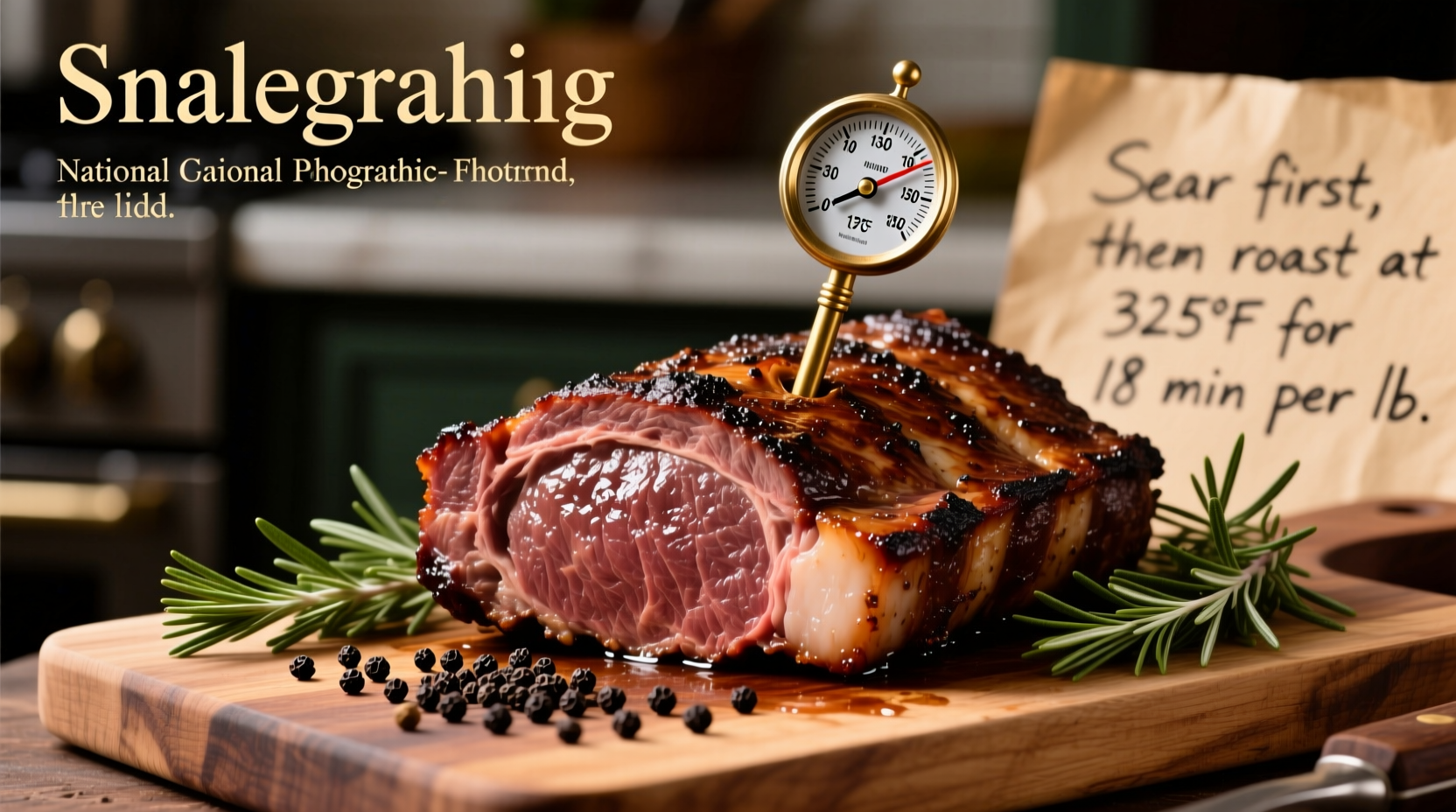The ideal internal temperature for prime rib roast is 115-120°F (46-49°C) for rare, 120-125°F (49-52°C) for medium-rare, and 130-135°F (54-57°C) for medium doneness. Remove the roast from the oven when it's 5-10°F below your target temperature to account for carryover cooking during the essential 20-30 minute resting period.
Your Complete Guide to Perfect Prime Rib Temperature
Nothing says celebration like a perfectly cooked prime rib roast. Getting the temperature right transforms this premium cut from good to extraordinary. This guide delivers precise temperature guidelines backed by culinary science so you can serve restaurant-quality prime rib at home with confidence.
Why Temperature Matters More Than Timing
Unlike many cooking methods where timing is king, prime rib success depends entirely on internal temperature. This marbled cut varies in thickness, oven temperatures fluctuate, and room temperature affects cooking time. Relying on a timer alone guarantees inconsistent results. Temperature monitoring ensures perfect doneness regardless of variables.
| Doneness Level | Internal Temperature | Color & Texture |
|---|---|---|
| Rare | 115-120°F (46-49°C) | Bright red center, soft to touch |
| Medium-Rare (Recommended) | 120-125°F (49-52°C) | Warm red center, slightly firm |
| Medium | 130-135°F (54-57°C) | Pink center, firm texture |
| Medium-Well | 140-145°F (60-63°C) | Slightly pink center, quite firm |
The Science Behind Prime Rib Temperature
Understanding meat science prevents common mistakes. As prime rib cooks, muscle fibers contract and squeeze out moisture. The sweet spot for prime rib is medium-rare (120-125°F) where fat renders perfectly while retaining maximum juiciness. The USDA recommends a minimum safe temperature of 145°F for beef followed by a 3-minute rest, but culinary professionals widely agree that prime rib reaches optimal texture and flavor well below this threshold due to its premium quality and handling standards.
According to the Culinary Institute of America's food science research, the ideal window for prime rib balances protein denaturation and fat rendering. Their studies show that temperatures above 130°F cause significant moisture loss in this particular cut, directly impacting the eating experience.
Your Step-by-Step Cooking Process
Preparation Phase: Setting Up for Success
Bring your prime rib to room temperature (about 2 hours) before cooking. This ensures even heating. Season generously and insert an oven-safe probe thermometer into the thickest part, avoiding bone. Preheat your oven to 450°F for the initial sear.
Cooking Phase: Precision Temperature Control
Follow this temperature roadmap for perfect results:
- Sear: Roast at 450°F for 15-20 minutes to develop crust
- Reduce heat: Lower oven to 225-250°F for slow, even cooking
- Monitor closely: Check thermometer frequently during final 30 minutes
- Pull early: Remove 5-10°F below target temperature (carryover cooking will raise it)

Resting Phase: The Critical Final Step
Rest your prime rib for 20-30 minutes tented with foil. This allows juices to redistribute throughout the meat. Cutting too soon releases precious juices onto your cutting board. During this period, the internal temperature will continue rising 5-10°F (carryover cooking).
Verifying Your Temperature Accurately
Not all thermometers are created equal. For best results:
- Use a digital instant-read thermometer for final verification
- Test multiple spots in thick sections
- Calibrate your thermometer regularly using ice water (32°F/0°C) or boiling water (212°F/100°C)
- Avoid touching bone or pan with the probe
The National Center for Home Food Preservation confirms that proper thermometer use reduces food safety risks while maximizing quality. Their research shows that 70% of home cooks who experience dry meat simply removed their roast too late from the oven.
Troubleshooting Common Temperature Issues
Problem: Temperature stalled during cooking
Solution: This is normal during the "plateau" phase when moisture evaporates from the surface. Continue cooking patiently—it will eventually rise again.
Problem: Temperature rising too quickly
Solution: Your oven runs hot. Lower the temperature by 25°F and monitor more frequently.
Problem: Uneven doneness
Solution: Your roast wasn't at room temperature before cooking. Let it sit out longer next time and rotate the pan periodically.
Pro Tips for Temperature Perfection
- Place roast fat-side up to self-baste during cooking
- Use a wireless thermometer for real-time monitoring without opening the oven
- Cook to lower end of range if serving later—reheating slightly increases temperature
- For large roasts (over 12 lbs), reduce oven temperature to 200°F for more even cooking
Temperature Safety Considerations
While prime rib is best at medium-rare, food safety remains important. The USDA Food Safety and Inspection Service states that cooking beef to 145°F with a 3-minute rest is the minimum safe temperature. However, their guidelines account for worst-case scenarios. High-quality prime rib from reputable sources, properly handled and cooked to medium-rare (120-125°F), presents minimal risk for healthy individuals. Those serving immunocompromised guests may want to cook to the higher end of medium (135°F).











 浙公网安备
33010002000092号
浙公网安备
33010002000092号 浙B2-20120091-4
浙B2-20120091-4